The expert guide to cavity wall insulation
Everything you need to know about cavity wall insulation from the types to use, tips for installing and who supplies it

There are many benefits to having cavity wall insulation (CWI) in your home. According to the Energy Saving Trust, uninsulated walls account for almost a third of the heat lost from a home. That means fitting cavity wall insulation is a great chance to slash your energy bills and save energy at home. It’s also one of the most cost-effective and long-lasting upgrades you can make.
Modern masonry homes are built using cavity walls, which typically feature an inner blockwork wall, a cavity and an outer wall of brick or rendered blockwork. The gap in between the layers is filled with energy-saving insulation to Building Regulations standards.
Older houses might have cavity walls but no insulation, resulting in a colder property and not as energy efficient as it could be. Thankfully, existing cavity walls can be filled with insulation without needing to be rebuilt.
'Most of a home’s energy is used in space heating and if you don’t have good structural fabric all you do is lose heat through walls,' says Simon Storer, Chief Executive at the Insulation Manufacturers Association.
'Most properties built after 1920 have a cavity wall – and most after 1990 will have insulation in it. Houses built before 1920 usually have a single skin brick wall, meaning there’s no cavity to be filled, so these types of homes can only be treated with external or internal wall insulation.'
What are the benefits of cavity wall insulation?
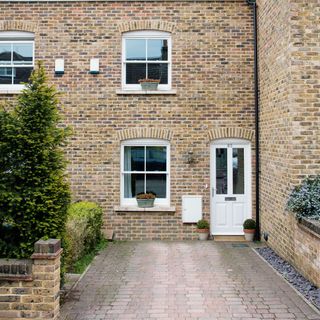
Well-insulated external walls help to create an efficient building envelope. This means less heat escapes from inside your home. Your central heating system won’t have to work as hard to achieve comfortable temperatures, saving energy and money on utility bills, and reducing your carbon footprint.
With fuel costs on the rise, now is a good time to invest in cavity wall insulation. You might not see the same pound-for-pound reduction in energy bills as you once would have, but you will be using less energy – so you’ll be protecting yourself against upcoming energy price hikes.
Get the Ideal Home Newsletter
Sign up to our newsletter for style and decor inspiration, house makeovers, project advice and more.
Upgrading insulation is the foundation for creating a more energy efficient house. This is known as a fabric first approach. 'It’s very important to make the insulation in your home as good as it can be,' says Simon from The Insulation Manufacturers Association. 'Invest in making the building fabric efficient before spending lots of money on high tech solutions like solar panels and heat pumps.'
Consider engaging an independent energy assessor to help you develop a short and long-term plan for improving your whole property’s energy efficiency. 'You’ll get the best benefits if cavity wall insulation is part of a wider plan for the whole property to reach the best energy efficiency possible,' says Nigel Donohue, CEO at the Insulation Assurance Authority.
What types of cavity wall insulation are there?
These are the best materials for insulating your home...
1. Blown mineral wool insulation
Mineral wool can be blown into a property’s cavity walls to form an energy efficient insulating layer. On the cavity wall insulation cost front it's on the lower end and offers good performance. The cavities need to be clean and free from obstruction, otherwise the insulation may get caught and prevent a full fill.
2. Polystyrene bead insulation
This method involves blowing small balls of expanding polystyrene insulation (EPS) into existing cavity walls through small holes. Beads are quick to install, high performing and don’t absorb moisture. 'One advantage of beads is that a long nozzle can be used that shoots the insulation into hard-to-reach areas,' says Ed Andrews, Commercial Director at cavity wall insulation supplier InstaGroup.
3. Injected foam insulation
Polyurethane (PU) foam can be pumped into a cavity wall, where it will solidify and form a thick, water-repellent insulating barrier with impressive thermal performance. This option isn’t as commonplace, and the Insulation Assurance Authority (IAA) doesn’t cover it under its guarantee scheme. There are situations where it makes sense, however, for instance if a property is in a flood risk area or has uneven cavities
4. Cavity insulation for new walls
Sheets of insulation are fitted straight into the cavity as new brick and block walls are built. Semi-rigid batts or slabs of mineral wool or rigid PIR boards are the most popular options, available in different thicknesses to achieve the desired performance level. Partial fill solutions leave a 25mm-50mm gap between the cavity and external wall to reduce the chance of moisture tracking into the home.
Who supplies cavity wall insulation?
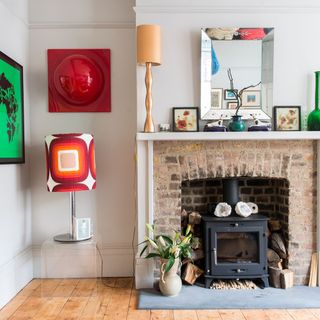
Retrofitting cavity wall insulation is not a DIY job; and badly fitted CWI by a cowboy builder could cost you a serious amount of money to fix. It’s important to employ a qualified installer using an approved insulating system to prevent cavity wall problems from emerging.
Look for a company that’s a member of the Cavity Insulation Guarantee Agency (CIGA) or National Insulation Association (NIA). Check out their websites for lists of registered installers in your region.
Going through a professional body means you’ll benefit from someone else checking that the installer meets the membership standards. Make sure your installation is covered with a 25-year CIGA guarantee, which will protect you if you experience problems with your insulation.
For new homes and extensions, your contractor will typically source insulation for you through their preferred builder’s merchant.
Tips for installing cavity wall insulation
1. Work out your wall type
It can be tricky to tell if your home has cavity walls, but there are clues to look for. Cavity wall bricks tend to be laid in an even pattern with only the long edge exposed, whereas solid walls often have a mixed pattern of long and short brick ends. The thickness of the wall is another indicator – cavity walls are normally over 260mm thick, whereas single skin walls are narrower. More modern homes may already be insulated. Having a professional look inside the wall (see point 4) may be the only way to confirm what you’re working with.
2. Ensure the walls are in good repair
Walls need to be in a good condition to have insulation fitted, otherwise all the benefits will be lost. Defects like cracked render, missing pointing, leaky gutters or damp patches inside can all impact on efficiency and may lead to damage if left unresolved. Get these fixed first before upgrading the insulation – some CWI installers will do this work for you.
3. Are you in a flood risk or coastal area?
If you’re in a flood risk zone or somewhere exposed to driving rain, such as by the sea, then your home might not be suitable for cavity wall insulation. A reputable professional will be able to let you know what insulation method is best for your home.
4. Check inside the cavity
A good installer should survey your walls before any work is done. They will assess the overall condition and look inside the cavity using a borescope to check for issues. For instance, any rubble or existing material would need to be cleaned out before new insulation is fitted. This process will establish which type of insulation is going to be best for your home.
5. Fit the insulation
Your specialist installer will drill holes into the outside of the wall and feed the insulation into the cavity, taking care to ensure every nook and cranny is filled. Once complete, the holes are filled up. The installation should only take a couple of hours, so there’s minimal disruption to your daily life. If required, any extra ventilation should now be installed.
What maintenance is required for cavity wall insulation?
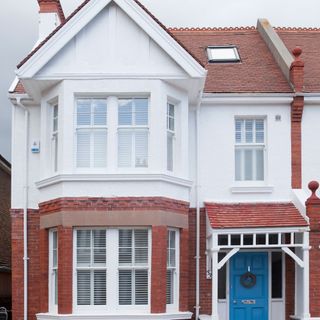
CWI is a fit-and-forget option, so you won’t need to maintain the insulation itself. Improving ventilation and staying on top of general property upkeep will ensure your energy efficient home continues to perform as expected.
Installing cavity wall insulation will help keep heat inside your home and reduce energy usage. But warm air carries more moisture, which can lead to damp and mould, so extra ventilation might need to be fitted as part of the upgrade. Some installers offer this as part of their service. Simple lifestyle changes can help manage humidity, too, such as opening windows when cooking, drying clothes outside where possible etc.
'With this level of insulation, you need appropriate ventilation,' says Nigel from the Insulation Assurance Authority. 'And having cavity wall insulation doesn’t mean that you can just turn your heating off. Problems with condensation and mould can happen when a home isn’t heated.'
Faults in your home’s structural fabric could expose your cavity walls to excess moisture and lead to problems with dampness coming through walls. So, keep on top of regular home maintenance. Your checklist will be similar to the pre-installation assessment: look for wall cracks, broken window seals, leaking gutters etc, and make sure vents aren’t blocked.
If your property shows symptoms of damp that you think are caused by cavity wall insulation, this is where that professional-backed guarantee becomes important. Contact the company that did the job, arrange for them to assess your home and complete any remedial work needed. If they don’t help or they’ve gone bust, you’ll have your CIGA guarantee to fall back on. Install dehumidifiers where needed.
How does cavity wall insulation affect my EPC rating?
An Energy Performance Certificate (EPC) provides information about a property’s energy use. EPC ratings show how much heating, hot water and lighting is likely to cost per year, as well as probable carbon dioxide emissions. Every home built, sold or rented must have an EPC, which rates the house from band A (most efficient) through to G (inefficient).
The certificate also indicates potential improvements that could be done to your home, including how much the work might cost and the estimated future savings on energy bills. Adding insulation is a common EPC-recommended solution, as a more energy efficient envelope equals lower heating demand.
Upgrading your cavity walls with insulation will have a positive impact on your EPC rating, and could even raise an uninsulated house up by an entire band. But the government’s stated target is for existing homes to achieve a C rating by 2035; and CWI isn’t likely to achieve this on its own. A whole house approach to improving a property’s energy performance – also taking in elements such as floor and roof insulation, windows, heating systems etc – is the best way to maximise its potential efficiency.
Do new builds come with cavity wall insulation as standard?
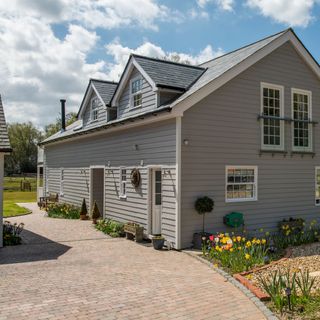
Every newly built house – whether it’s constructed with cavity walls or another method – must meet or exceed the Building Regulations for energy efficiency under Approved Document L.
'The Regulations are all being updated in 2022, making them more demanding. In addition, they will set targets for expected carbon emissions and overall energy demand from homes,' says Matthew Evans, Head of Technical GB at Kingspan Insulation. 'To achieve these, the external walls on most new properties will need to be insulated to a higher standard than the minimum U-value targets.'
Because cavity walling is a site-based trade, the efficiency of the finished home relies on good practice during construction. So it’s crucial to find experienced, trustworthy builders and trades with proven track records of delivering what they’ve promised.
There are two main approaches to insulating a new cavity wall: partial fill and full fill. Both offer a choice of rigid foam and mineral wool-based insulations. The key difference is that partial fill cavity wall insulation retains an air gap (usually 50mm) between the insulation and the outer brick or block leaf. The gap provides better protection against water ingress, but it’s not suitable for every project and some builders prefer full fill because there’s less chance of things falling into the space.
Should I add cavity wall insulation to my extension? And which is best?

Most extensions are built with cavity walling. Under the Building Regulations, they must be insulated to modern standards. Rigid foam boards and mineral wool batts are your main options, and the best choice will depend on your project goals. If you want best performance in the thinnest wall profile, for instance, rigid foam can deliver that – albeit at a slightly higher price.
You could technically build a new, thermally efficient extension onto an existing house and leave it at that. You’ll be missing a trick, though, especially if you’re creating a lovely new open-plan space that flows into the old house, like a kitchen-diner. This would leave you with a mostly leaky house that doesn’t maximise the performance benefits of the new addition.
So, minimise disruption and take the opportunity to upgrade thermal efficiency elsewhere in the house while you’ve got the builders on site – whether that’s with retrofit cavity wall insulation, loft insulation, floor insulation or a combination of all three.

Rhoda Parry was the Editorial Director of Ideal Home and its sister titles, 25 Beautiful Homes and Style at Home from 2021-2022. She wass also Editorial Director for Gardeningetc, Amateur Gardening and Easy Gardens. Rhoda is a highly experienced editor and journalist and has worked on many women's lifestyle media brands throughout her career. For the last 20 years, she has specialised in homes, interiors and gardens.
-
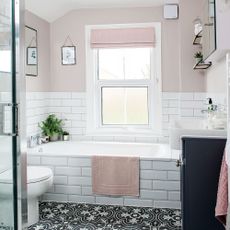 6 questions I wish I'd asked before starting my bathroom renovation
6 questions I wish I'd asked before starting my bathroom renovationFrom double checking my budget to choosing more exciting taps these are my top tips to avoid costly mistakes when it comes to a bathroom reno
By Holly Walsh
-
 A new M&S study finds that Gen Z likes to sleep with 7 pillows - but sleep experts warn against this trend
A new M&S study finds that Gen Z likes to sleep with 7 pillows - but sleep experts warn against this trendIt turns out more pillows does not equal a better night's sleep
By Kezia Reynolds
-
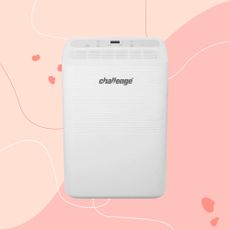 I tested the 12L Challenge dehumidifier in my damp Victorian home over winter — I haven’t spotted any signs of mould for the first time in five years
I tested the 12L Challenge dehumidifier in my damp Victorian home over winter — I haven’t spotted any signs of mould for the first time in five yearsThe Challenge 12L dehumidifier doesn’t have too many bells and whistles, but I can already see the difference it’s made to my damp home
By Lauren Bradbury